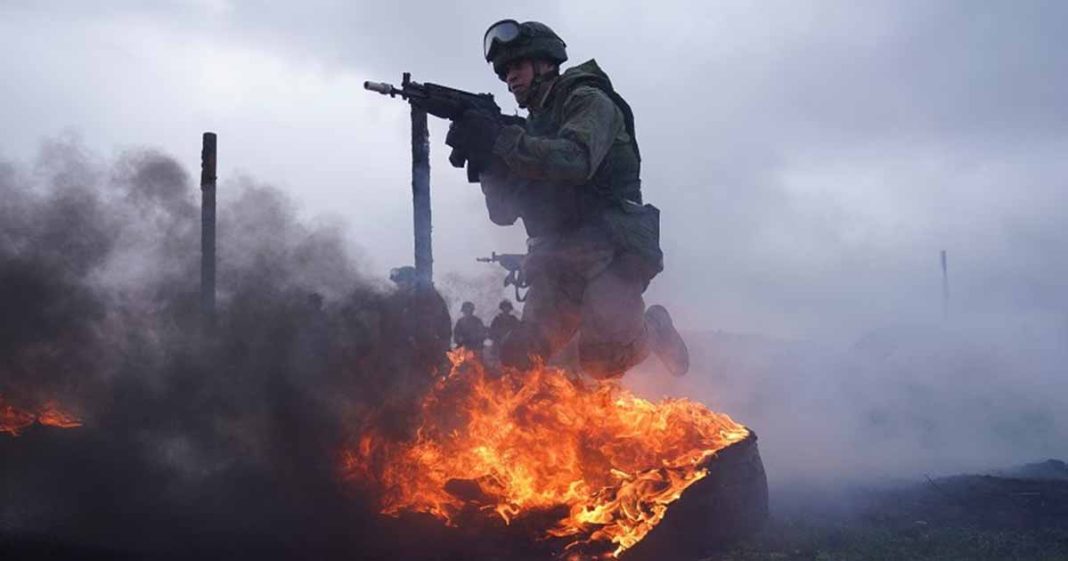The world watches helplessly as Russia and the United States confront each other in yet another eyeball to eyeball match – the first such stand-off after the Cuban missile crisis. Will one of them blink, as it happened in 1962? Or there will be another Sarajevo?
The Sarajevo incident refers to the event that triggered the First World War. On 28 June 2014, Archduke Franz Ferdinand, heir to the Austro-Hungarian throne, and his wife Archduchess Sophie were shot to death by a Bosnian Serb nationalist during a state visit to the Bosnian capital of Sarajevo. The murders sparked a chain of events that led to the outbreak of World War I by early August 2014.
The Cuban missile crisis was the Russian roulette, played in October 1962, between the erstwhile Soviet Union and the United States. For thirteen days, the world waited in awe and desperation as the two Cold War superpowers tested each other’s nerves.
Read more: Ukraine: The battle for new world order?
What had happened?
In October 1962, an American U-2 spy plane secretly photographed nuclear missile sites being built by the Soviet Union on the island of Cuba. President Kennedy purposely kept the Soviet Union and Cuba in the dark that the US knew the missile deployment. After many long and difficult meetings, Kennedy decided to impose a naval blockade on Cuba by positioning aring of combat ships around it. The aim of this “quarantine,” as he called it, was to prevent the Soviets from reinforcing their military supplies to Cuba. He also demanded the removal of the missiles already there and the destruction of the sites.
While Fidel Castro, the Cuban leader, urged the Soviet PM Nikita Khrushchev to stand firm against, what he called the US blackmail, the leaders of both superpowers acted maturely, recognized the devastating possibility of nuclear war, and publicly agreed to a deal in which the Soviets would dismantle the weapon sites in exchange for a pledge from the United States not to invade Cuba. Kennedy also promised that, as a quid pro quo to the Soviet move, the US will remove its nuclear missiles deployed in Turkey. The US never did.
Read more: Explosions rock Ukraine as Putin begins military operation
After Russia, Ukraine is the second-largest county, by area, in Europe
Russia is located to the east and northeast of Ukraine. Both countries have been inhabited by the Slavic races. It is difficult to determine exactly when in history Russia’s involvement in Ukraine started. Like many countries, the borders between Ukraine and Russia remained like a permeable membrane, expanding or contracting with each passing era.
In recent times, the Ukrainian Bolsheviks, who had defeated the nationalists, established the Ukrainian Soviet Socialist Republic which, on 30 December 1922 became one of the founding republics of the Soviet Union. Nikita Khrushchev and Leonid Brezhnev were of Ukrainian origin. During the Soviet rule, both of them were referred to as the “Ukrainian Mafia”.
In 1990, Solzhenitsyn, the Soviet dissident, wrote an essay “Rebuilding Russia”, in Komsomolskaya Pravda. In the essay, Solzhenitsyn urged Russia to cast off all non-Slavic republics, which he thought were a burden on the Russian nation. On 8th December 1991 leaders of Russia, Ukraine, and Belarus secretly met in western Belarus and signed the Belavezha Accords, which proclaimed the dissolution of the Soviet Union and declared the creation of the Commonwealth of Independent States (CIS), leaving the Central Asian republics to fend for themselves. On the night of 25th December 1991, at 7:32 p.m. Moscow time, after Gorbachev left the Kremlin, the Soviet flag was lowered for the last time, and the Russian tricolor was raised, symbolically marking the end of the Soviet Union.
The Soviet Union unraveled in 1991, but soon thereafter it started efforts to bring the breakaway Slavic republics back into the pack. As for the Central Asian republics, Russia coined the term Blizhnee Zarubezhne or the “Near Abroad”. Russian President Vladimir Putin has declared the region to be a component of Russia’s “sphere of influence”, and strategically vital to Russian interests. The concept has been compared to the Monroe Doctrine which prohibits any outside interference in Latin America, considered as the backyard.
Read more: China slams US for creating panic on Ukraine issue
What is the present power play in Eastern Europe about?
On 12 March 1999, the Czech Republic, Hungary, and Poland joined NATO; Bulgaria, Estonia, Latvia, Lithuania, Romania, and Slovakia joined in March 2004. Among all these states, Estonia, Latvia, and Lithuania were once part of the Soviet Union. The rest of them (except Romania) were members of the Soviet-controlled Warsaw Pact.
NATO is encroaching eastwards, gobbling up the former Soviet republics and client states one by one. Its next target is Ukraine. If Ukraine joins NATO, it will eliminate the buffer that presently exists between NATO and Russia. This had not happened even during the Cold War period. During all this tumult, the West, led by the US, is behaving like the Little Red Riding Hood, fearful of the Russian “Wolf”.
What are the options available to Putin? Will he sledgehammer Ukraine and instigate another Sarajevo, or, like Nikita Khrushchev during the Cuban Crisis, show strategic restraint. Imran Khan, during a recent interview with the Russian TV host Oksana Boyko, has suggested the second option.
Saleem Akhtar Malik is a Pakistan Army veteran who writes on national and international affairs, defense, military history, and military technology. He Tweets at @saleemakhtar53. The views expressed in this article are the author’s own and do not necessarily reflect the editorial policy of Global Village Space.














